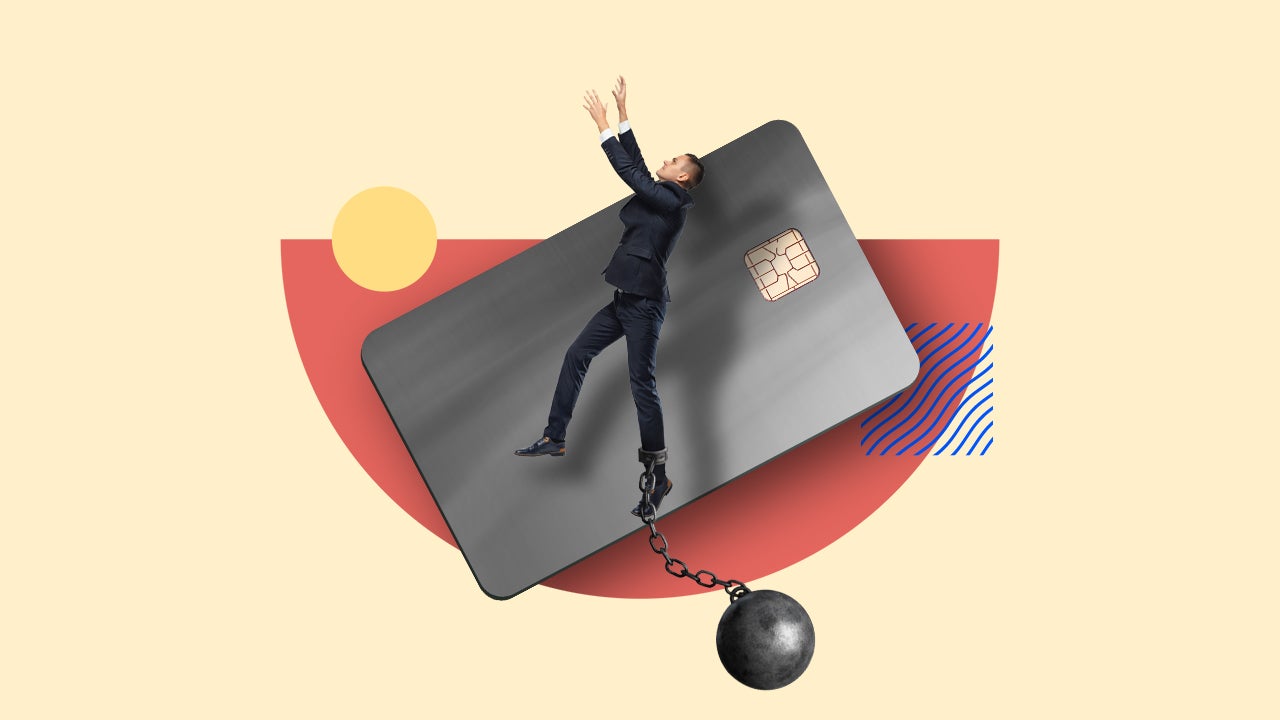Millions of Americans entered coronavirus pandemic with credit card debt

As financial uncertainty surrounding the novel coronavirus pandemic grows and more Americans face lost wages and hardship, dealing with existing high-interest debts can become even more of a challenge.
According to a recent survey from Bankrate, 59 percent of American credit cardholders entered the outbreak already in credit card debt. That’s equivalent to about 110 million U.S. adults.
“The coronavirus outbreak is unfortunate proof that circumstances can change in an instant,” says Ted Rossman, industry analyst at Bankrate.com. “What many believed was manageable credit card debt has suddenly turned into a situation of uncertainty.”
Credit card debt is lasting for Americans
Of those who are in high-interest debt, many have carried balances for a long time, according to the survey.
Among survey respondents who carry a balance on their credit cards, just 38 percent have done so for less than one year. In total, 56 percent of those with credit card debt have carried it for more than one year, with 15 percent having carried their debt for five or more years. Seven percent of credit card debtors can’t recall how long they’ve been in credit card debt.
As we enter a new period of uncertainty following years of economic expansion and low unemployment, those who couldn’t shake their debt in the past may face even larger hurdles now.
Nearly half (49 percent) of those in debt said they were at least somewhat stressed about their credit card balances, while 13 percent admitted to being very stressed. Younger generations, lower earners and parents with children under 18 were most likely to experience stress related to credit card debt.
Why cardholders are in debt
According to the survey, many cardholders aren’t in credit card debt because of superfluous spending or shopping sprees. Instead, necessities make up a large portion of respondents’ reasons for carrying balances.
Twenty-six percent said that day-to-day expenses like groceries, childcare or utility payments were the biggest factor in their debt balances. Another 13 percent said medical bills, 12 percent said car repairs or maintenance, and 10 percent said home repairs.
Retail purchases such as clothing and electronics made up 18 percent of answers and vacation expenses accounted for 12 percent, while 9 percent said the reason they carry a balance was something else besides these choices.
For those who took on debt because of a vacation or expensive electronics, getting serious about budgeting and planning for large purchases can help them avoid charging more than they earn each month. This practice may be especially important for overspenders today, as online shopping opportunities soar and more time spent at home may easily lead to spending.
But it’s not so simple for those racking up debt trying to keep up with everyday expenses. Instead, these survey results illustrate the financial dependence that many have on their credit cards, according to Rossman.
“Many adults were already teetering on the financial edge, reliant on credit cards to pay for day-to-day bills and emergencies at the start of the COVID-19 outbreak,” he says.
What you can do about debts today
Since the pandemic has grown, many of those who were already reliant on credit cards for everyday expenses may face even more dire situations because of lost income and other financial hardships. That’s why it’s more important than ever to communicate with your credit card issuer and take action to find resources that can offer relief.
“Credit card rates remain very high, over 17 percent for many cardholders, and Federal Reserve interest rate cuts won’t provide much relief,” says Rossman.
“Things like payment relief programs, balance transfer cards, and even personal loan debt consolidation are all options right now and should be fully explored to save money and alleviate stress,” he says. “Credit card debtors need to take matters into their own hands.”
Talk to your issuer
The first thing you should do if you’re worried about credit card debt is reach out to your credit card issuer for assistance.
Many issuers have developed assistance programs specifically for those affected by the coronavirus pandemic and may offer solutions ranging from forbearance plans to credit line increases, waived fees and even approved missed payments.
Working out a personalized plan with your credit card issuer can also keep your credit score from taking a hit due to missed or late payments, which may have an even longer impact on your financial health.
These programs are not automatic, though. Before missing or making a late payment, you should speak directly with a representative from your issuing bank to develop an individual solution.
Look into a balance transfer
If you have extra money to put towards your debt now and you’re able to qualify, consider opening a balance transfer credit card with a zero percent interest introductory period.
With the Citi® Double Cash Card, for instance, you can transfer your debt balance for a 3 percent fee (or $5, whichever is greater) and enjoy 15 months of zero percent interest on it (14.24 to 24.24 percent variable APR thereafter), giving you ample time to make payments directly toward your principal balance.
Ideally, you should pick a balance transfer card with an introductory period long enough for you to pay your balance in full. If you don’t have the cash to pay your total balance or recent changes in your financial circumstances prohibit you from doing so, using this zero interest period to pay down a portion of your total balance can make a big difference in your overall debt payoff timeline.
Consider credit counseling
If you’re in a tough spot financially and unsure how to move forward in paying off debts or even making minimum payments, speaking to a credit counselor may be one solution.
Credit counselors can assist you with developing a debt payoff plan, figuring out how to keep up with your payments and accounts and even budgeting.
Reach out to a nonprofit credit counseling agency such as those endorsed by the National Foundation for Credit Counseling.
Bottom line
High-interest credit card debt can stick around and set back your financial health for longer than you may like. And in the midst of many people’s current uncertainty about their financial situations, it can be even more concerning.
Credit card issuers are taking steps to lighten the burden, and the recently-passed federal stimulus package may help provide some relief, but it’s helpful to begin considering longer-term solutions.
Take into account the purchases or habits that drove you into debt in the first place and begin taking steps as you’re able, such as building up your emergency savings, tightening your budget and reining in spending, so you can begin paying off debt and developing the healthy habits that will keep you out in the future.
Why we ask for feedback Your feedback helps us improve our content and services. It takes less than a minute to complete.
Your responses are anonymous and will only be used for improving our website.





